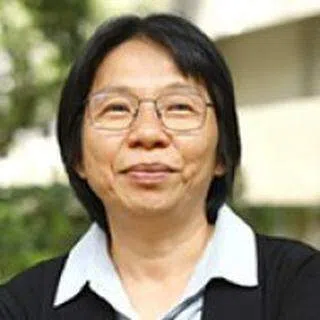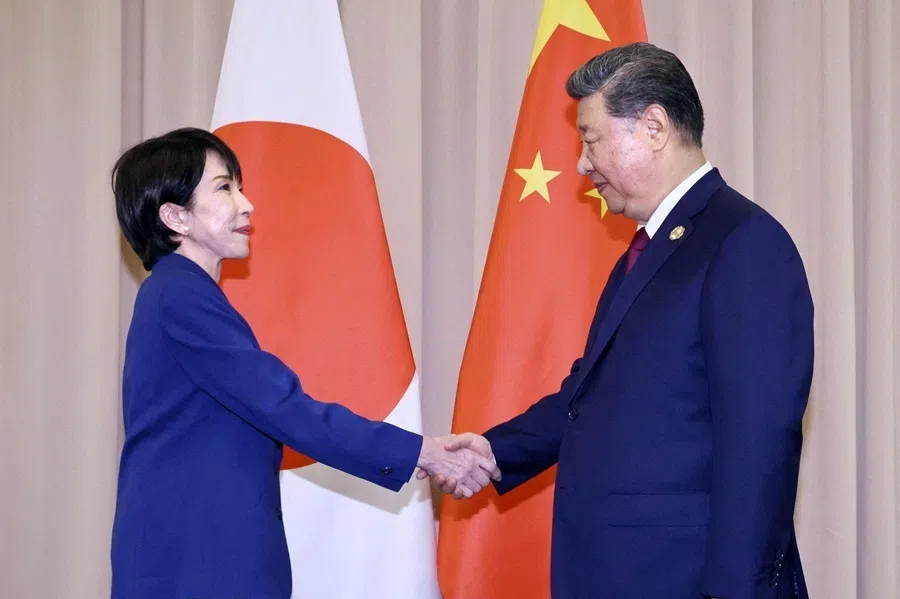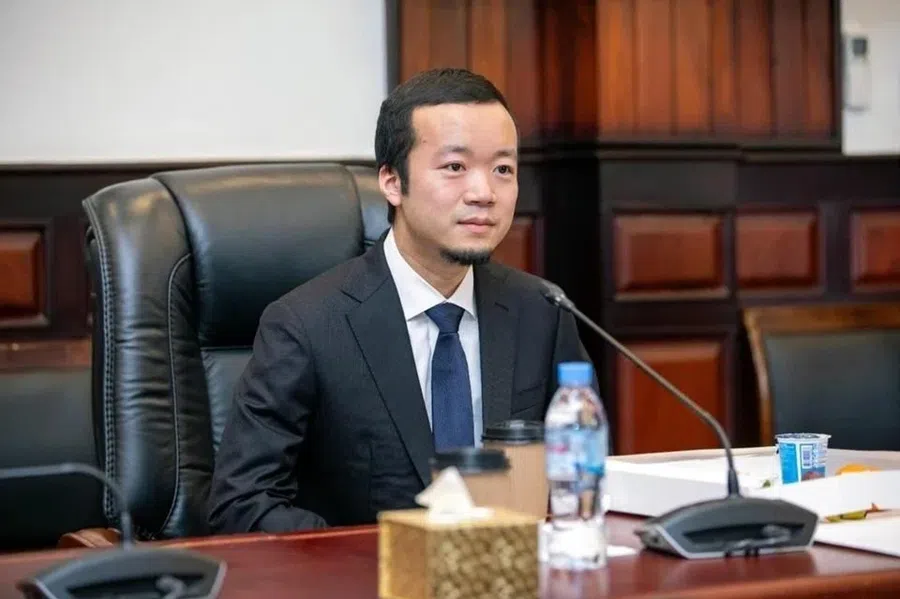From pro-Taipei to pro-Beijing: Are KMT Chinese in Thailand switching their allegiance?
Because of China's soft power, some Yunnanese Chinese in Northern Thailand - known as KMT Chinese and who are descendants of KMT supporters who left Yunnan and eventually settled in Northern Thailand - have gradually shifted from being pro-Taipei to being pro-Beijing. Out of the 110 private tutoring Yunnanese schools in Northern Thailand for instance, more than 40 have begun to accept Beijing's support and modelled their school structure in accordance with PRC's guidance. How many more converts can China's soft power yield?
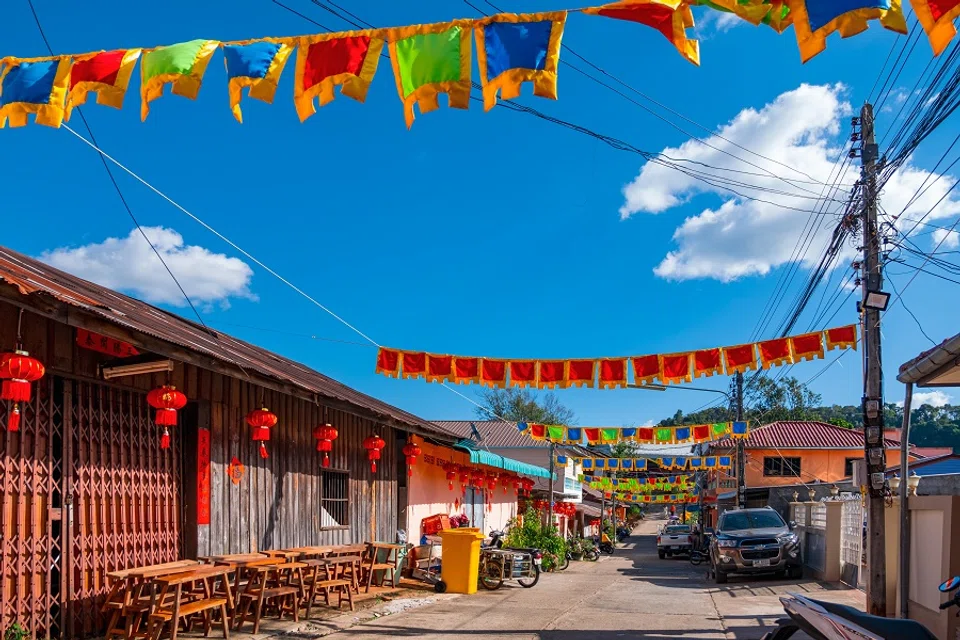
The Yunnanese Chinese living in Northern Thailand - categorised as "overland Chinese" or "overland Yunnanese" - are different from other ethnic Chinese migrants. They originate from either the south or southwest of China. The Yunnanese Chinese can be further split into the Hui and the Han, with each having distinct ethnicities, histories and political identities.
The Hui is a fragmented group, while a considerable number of the Han are known for being former soldiers and supporters of the Chinese Nationalist Party (Kuomintang, KMT) who in 1949, escaped from Yunnan into Burma after the communist victory. After the 1960s, they settled in Northern Thailand.
KMT Chinese caught between Taiwan and mainland China
In terms of the Han or "KMT Chinese" in particular, over six decades, four generations have dwelled in the mountainous borderlands, gradually gaining Thai citizenship and at the same time getting multiple forms of support from Taiwan (e.g., agricultural technology, infrastructure and development aid). The political outlook of this group emphasises anti-Communism, in line with the official view in Taipei. The community also maintains a distinct Yunnanese identity: retaining practices of traditional Chinese culture, customs and popular rituals; upholding Taiwan-based Chinese education; and using traditional Chinese characters and curricula as taught in Taiwan.
While Taiwan has become less relevant to the current generation and its influence is significantly reduced, China's hard and soft powers have gone in the opposite direction.
Over the past two decades, the People's Republic of China (PRC) has increasingly employed "soft power" strategies through the Overseas Chinese Affairs Office (Qiaoban) and other official and non-governmental organisations dealing with overseas Chinese matters. Where Thailand's ethnic Chinese are concerned, it collaborates with schools to export its brand of Chinese education and culture. The KMT Chinese are among those receiving this support.
But while other ethnic Chinese in Thailand have readily accepted this aid - and this has led to extensive collaboration - the KMT Chinese by contrast is divided on how they are to deal with this development. The crux of the matter is: should they ride on China's rise or should they retain the stance of their ancestors, who were anti-communists and Taiwan supporters?

In short, the KMT Chinese are caught between Taiwan and China. While Taiwan has become less relevant to the current generation and its influence is significantly reduced, China's hard and soft powers have gone in the opposite direction. Building on co-research completed in 2018, I revisited Arunothai, a KMT village in Chiang Mai, to gather some views from respondents.
China's growing soft power
Coined by Joseph Nye, the term "soft power" refers to actors' ability to shape preferences, win hearts and minds, charm others, or attract international audiences to their favour. Several researchers have confirmed that China uses soft power offensively as a rising power. Others have documented policies that China implements as part of its soft power strategy using cultural, educational, academic, business, public and official diplomatic activities around the world. Yet other researchers have emphasised the role of Hanban and extensive Confucius Institutes (CI), and how these view education as the major source of influence.
Because of China's soft power, some KMT Chinese in Northern Thailand have gradually shifted their position from being pro-Taipei to being pro-Beijing.
China's soft power strategy appears to have been effective in Thailand, when observed through the proliferation of CIs and the acceptance of Chinese-affiliated schools and universities throughout Thailand. This is due to three main reasons: (1) the existing historical background of Sino-Thai relations; (2) Thailand's openness towards China motivated by its economic interests; (3) the role of ethnic Chinese communities in Thailand in helping to propagate international collaboration via trade, economy and culture.
China's soft power strategy in Southeast Asia and particularly in Thailand also reflects the Chinese state's perception that the ethnic Chinese are an important target group since they "represent" Chinese traditional culture. Moreover, it takes into account the successive generations of ethnic Chinese "public diplomats". Together, this amounts to a major shift in China's diaspora policy.
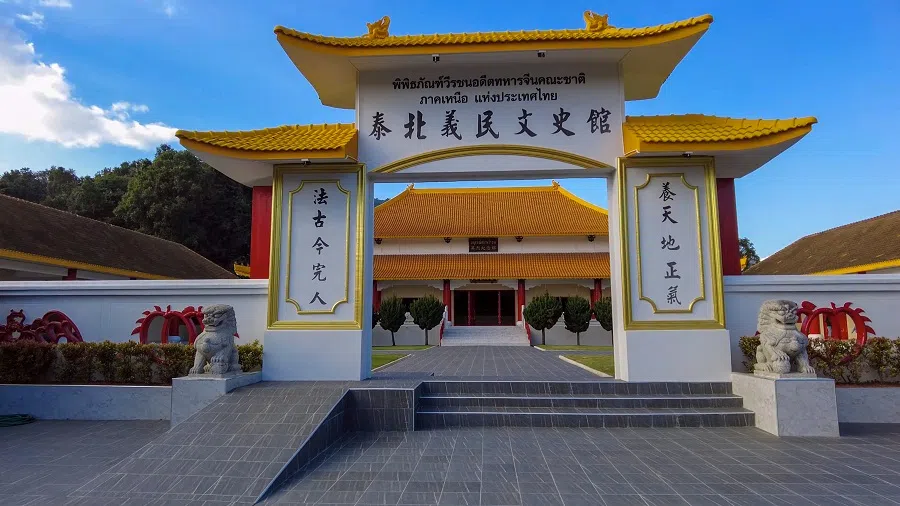
Because of China's soft power, some KMT Chinese in Northern Thailand have gradually shifted their position from being pro-Taipei to being pro-Beijing. This is seen in their educational preferences. Out of the 110 private tutoring Yunnanese schools in Northern Thailand, more than 40 have begun to accept Beijing's support and modelled their school structure in accordance with PRC's guidance.
Jiaolian School, as the pioneer school that connected with the PRC, illustrates the ongoing internal conflict among the KMT Chinese. It also shows that despite China's soft power, some Yunnanese Chinese choose not to take sides between Taipei and Beijing; this allows them to reap benefits from both countries for their children (and themselves). However, they may eventually side with PRC.
Assimilation into Thailand and retaining KMT Chinese identity
Between 1953 and 1954 and again in 1961, the Taiwanese government was forced by international pressure to evacuate KMT Chinese stationed in Burma back to Taiwan. However, around 3,300 KMT Chinese of the two KMT units (the Third and Fifth Field Army) including former soldiers, their families and refugees, decided to retreat to the Northern Thai border.

Over the past decades, the Thai government has labelled this group "hill tribes". Members of the group are often associated with negative stereotypes: mountainous people with unstable population movement; people with ambiguous or near-stateless identities; those who are engaged in extensive narcotic drug usage and drug-related violence; opium cultivators; those susceptible to communist ideals and infiltration; and those responsible for deforestation and underdevelopment.
Today, the Yunnanese Chinese population in Northern Thailand numbers around 200,000. Most are Thai citizens and they inhabit 108 villages in three provinces: Chiang Rai, Chiang Mai and Mae Hong Son.
As a general policy, the Thai government made an attempt to integrate hill tribes, including the KMT Chinese, into Thai culture and society. The policy includes extending Thai citizenship to them and providing Thai education through Thai schooling, and endorsing the teaching of state-sponsored Theravada Buddhism. Besides Thai efforts, assistance from Taiwan also helped raise the economic and social status of KMT Chinese.
Today, the Yunnanese Chinese population in Northern Thailand numbers around 200,000. Most are Thai citizens and they inhabit 108 villages in three provinces: Chiang Rai, Chiang Mai and Mae Hong Son. Some of their young have moved to Bangkok, Phuket and other cities for work. They are represented by four associations in Bangkok, Chiang Rai, Chiang Mai and Phuket.
There are around 110 Chinese schools - registered as private "informal tuition schools" under the Private School Act B.E. 2550 (2007) - established within 108 Yunnanese Chinese villages in Northern Thailand. These provide Chinese education from primary to high school levels. Registered under the Thai Ministry of Education, these schools teach multiple subjects in the Chinese language during weekday evenings, and provide Chinese education to Yunnanese children and other ethnic groups such as Shan, Lahu and Akha, who live in surrounding villages.

In Arunothai, a village located in Chiang Dao, Chiang Mai (also known as KMT village for having had the Third Field Army based there), as reported by the Department of Provincial Administration (DOPA) in Thailand's Ministry of Interior, there were 1,932 households with a total population of 9,728 people in 2021. The village population is made up of 90% Han Chinese, and 10% of other diverse ethnic peoples (Shan, Lisu, Lahu, Akha and Kachin).
Like other Yunnanese Chinese communities in Northern Thailand, those in Arunothai gradually accepted Thai citizenship after the 1980s, having become long-term residents in Thailand. Most Yunnanese Chinese maintain traditional Chinese culture and practise customs and popular rituals. The schools launched by Yunnanese Chinese leaders in past decades followed a Taiwan-based curriculum, teaching Confucianism and other subjects to cultivate attachment to Taiwan. The Chinese writing system also used the traditional Chinese characters retained in Taiwan, Hong Kong, Macau and overseas Chinese communities. Textbooks, educational materials and other resources were also sent from Taiwan at the request of village leaders.
... the Free China Relief Association (FCRA) projects were terminated due to regime change in Taiwan during the 2000s from the KMT to the Democratic Progressive Party (DPP).
Taiwan losing ground
During the 1980s to the 2000s, the KMT Chinese leaders, with unofficial support of political leaders in Taipei, maintained through their schools a patriotic Chinese identity tied to the history of the KMT in Taiwan. Furthermore, the Free China Relief Association (FCRA), a semi-official organisation that works closely with the KMT in Taiwan, came to Northern Thailand in 1982, aiming to improve not only social and economic development but also to actively promote a sense of loyalty to Taipei.
By 1994, however, Taiwan and Thailand appeared to be changing their approach. On the one hand, Thailand gradually developed economic regionalism within Southeast Asia under the slogan "turn battlefields into marketplaces". On the other hand, the FCRA projects were terminated due to regime change in Taiwan during the 2000s from the KMT to the Democratic Progressive Party (DPP).
This was because the KMT which supported the FCRA projects, and the DPP's interest in the Yunnanese Chinese in Thailand went in opposite directions. As a result, Yunnanese schools not only faced challenges in continuing their operations, they also struggled to retain the loyalty of the younger generations towards Taiwan.

To run the Chinese schools smoothly, second-generation leaders in Arunothai and the Chinese Language Teachers Association (CLTA) of Chiang Mai sat down to discuss how they were to solve the shortage of teachers, textbooks and other resources.
"How could we betray our ancestors who [were] attached toward Taiwan; we should not have received any assistance from communists." - old KMT leaders
From Taiwan to mainland China: the case of Wang Xiangxian
In 2004, Wang Xiangxian, leader and former director of the Hua Xing School in Arunothai, along with CLTA teachers, visited the Chinese consulate-general in Chiang Mai, to seek assistance for Yunnanese schools. Wang and the other teachers wanted to prioritise Yunnanese children's education over political allegiance. The consul-general did not respond immediately, but in 2009, he did visit the village, providing student scholarships worth 250,000 baht, and 12 boxes of textbooks.
However, the visit - which was warmly welcomed by children and young villagers waving the PRC flag - raised tensions within the community. Subsequent PRC assistance also caused division among leaders, finally leading to Wang's resignation. Wang was deemed to have brought a communist leader, "his ancestors' enemy", to the village. In 2011, after his forced resignation, Wang set up a new school called Jiaolian School (清迈教联高级中学) which received the full support of the Chinese consulate in Chiang Mai and the Qiaoban.
CLTA was changed into the Jiaolian Foundation, built education networks and received monetary donations from the PRC, and other forms of support from external organisations. Polarised sentiments between older and younger generations were evident during Jiaolian School's operational processes with old KMT leaders lamenting: "How could we betray our ancestors who [were] attached toward Taiwan; we should not have received any assistance from communists."
Despite tensions in Arunothai, since 2012, Wang Xiangxian and his teachers have continued to accept the PRC's help. Wang adopted standard Mandarin, used simplified characters for teaching, and imported Chinese textbooks from China. Consequently, he was recognised as an "Outstanding Person in Overseas Chinese Education" by the Qiaoban.
Jiaolian School is generally a tuition centre licensed under the Private Education Commission of the Thai Ministry of Education. Under this license, Jiaolian School teaches multiple subjects: Mathematics, English, Geography (Global and Chinese Geography), and History (Global and Chinese), applying the simplified-character writing system in these cases. It also provides education from kindergarten to high school with about 1,200 students enrolling each year. The school caters to all ethnicities.
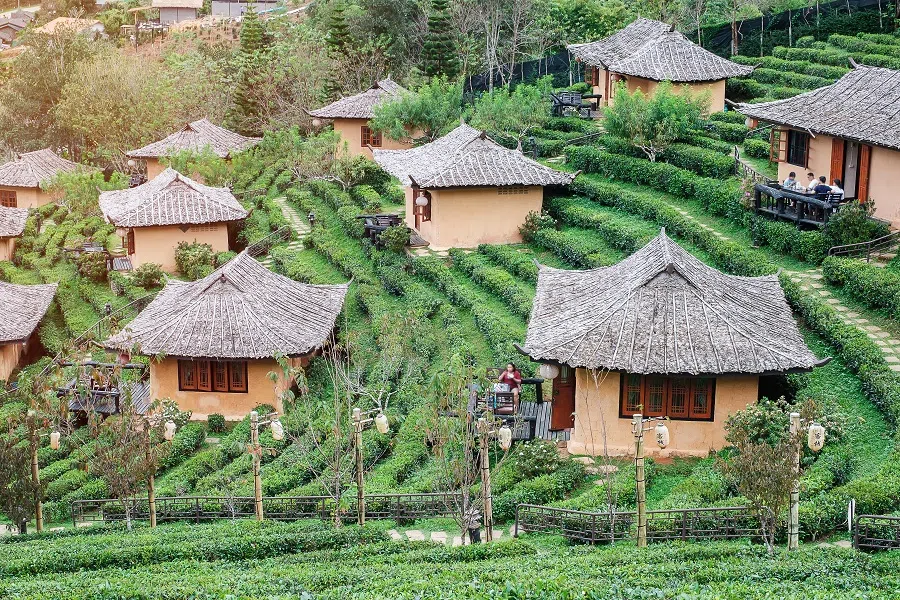
China's soft power strategy via education is reflected in how the Qiaoban headquarters in Beijing and Qiaoban of Yunnan, as the provincial administrative institute, work with Southeast Asia countries.
Jiaolian School demonstrates how China's consistent exercise of soft power has made the country more attractive to the KMT Chinese.
At Arunothai, the Qiaoban provides free textbooks, stationery and study materials for every student enrolled at Jiaolian School; it sends eight to ten Chinese language teachers from China to this school every year; and it trains local teachers, both in this school and at those nearby which are affiliated with Jiaolian School, in standard Mandarin for four to 12 months.
Besides the Qiaoban, the Chinese consulate in Chiang Mai also provides scholarships for students pursuing Higher Education in China. For students who do not have a Thai identification card (which impedes them from applying for a Thai passport), the Chinese consulate grants overseas Chinese passes to allow them to enter China for education. Additionally, the Chinese consulate donates desks and other materials to the school.
Growing the future with a rising China?
Jiaolian School demonstrates how China's consistent exercise of soft power has made the country more attractive to the KMT Chinese. Some village leaders recently said, "Wang Xiangxian and Jiaolian School are going in the right direction, growing the future along with a rising China." The school's success since 2010 is evident in the fact that 300 of its graduating students have received Chinese scholarships for tertiary education.
The school's network has been extended to connect with Chinese universities, contributing to student mobility. Moreover, some universities in Guangxi, Yunnan, Sichuan and Zhejiang provinces have proposed to give full scholarships to students who want to specialise in the sciences and digital technology.
In 2018, Jiaolian School was selected by the Hanban headquarters in Beijing as a major centre in Chiang Mai province for Hanyu Shuiping Kaoshi (HSK or the Chinese Proficiency Test) which is also an internationally standardised exam.
Following Jiaolian School's success, 40 Yunnanese schools have decided to jump on the bandwagon and receive the PRC's support. The 60 remaining schools are hesitant and prefer to wait for clearer signals from leading community members and Yunnanese Chinese associations.
The current generation regularly watches CCTV (China Central Television) in the Chinese language and learn more about China today than in the past. Signboards in the village have also switched from using traditional characters to simplified characters.

Besides the fear of being regarded as being disloyal to their ancestors, another primary concern is that modern PRC teachers do not sufficiently emphasise Confucian ethics or traditional Chinese customs and cultures. In the meantime, these remaining schools retain Taiwanese traditional writing characters and quality assurance evaluation; to be sure, the curriculum has been modified to incorporate both Thailand-based issues and Yunnanese Chinese historical contexts.
Can the Yunnanese Chinese resist China's soft power? At the village level, the Chinese media and social media are additional vessels for extending PRC soft power. The current generation regularly watches CCTV (China Central Television) in the Chinese language and learn more about China today than in the past. Signboards in the village have also switched from using traditional characters to simplified characters.
At the institutional level, the Yunnan Association of Chiang Mai and the Chinese Language Teaching School Club - the two main organisations representing Yunnanese Chinese in Chiang Mai - keep in touch with Taiwan by meeting with representatives of the Culture Center of Taipei Economic and Cultural Office (TECO) located in Thailand.
I think within five years, the Yunnanese Chinese schools in Northern Thailand will transform to follow the rise of China. - chairman of the Yunnan Association
However, in 2020, they also invited the Chinese consulate in Chiang Mai to visit the associations for the purpose of developing Chinese education in Yunnanese Chinese schools. The chairman of the Yunnan Association confirmed that "we should stop taking sides today since PRC and Taiwan are our brother and sister. Although Taiwan may feel unhappy and some KMT leaders may respond negatively, we should consider our children and engage China and the modern world. I think within five years, the Yunnanese Chinese schools in Northern Thailand will transform to follow the rise of China."
Students and their families also have other attractive opportunities to consider, such as scholarships, cheap tuition and affordable dormitories sponsored by the PRC. More importantly, parents are forward-thinking and future-oriented in wanting their children to be exposed to well-established networks within Chinese universities.
This case study of the Yunnanese Chinese in Northern Thailand shows the tendency of China's soft power strategy to intersect with particular histories and with local situations. Different generations of the Yunnanese Chinese community have responded differently to China's soft power, illustrating complexities within the ethnic community.
Although the tension within the Yunnanese Chinese villages will continue to exist, the success of the Jiaolian School shows a gradual change in the mind of the villagers. The educational preference of the 40 private tutoring schools after having accepted Beijing's support and modelling syllabus after PRC schools, demonstrates the shifting position from being pro-Taipei to being pro-Beijing. The Yunnanese Chinese adopt an enterprising strategy to gain benefits for their children and the community, and this trend will likely continue into the future.
This article was first published by ISEAS - Yusof Ishak Institute as a Fulcrum commentary.
Related: The nature of recent Chinese migration to Thailand | Rising Chinese student enrolment in Thailand: Cash cows at a cost | New Chinese migrants forming parallel communities in Chiang Mai | Growing China's soft power: Free debate and creative thinking are key | China and Chinese overseas: A softer soft policy needed? | Confucius Institutes accepted in SEA and embraced by Cambodia, unlike in the West
